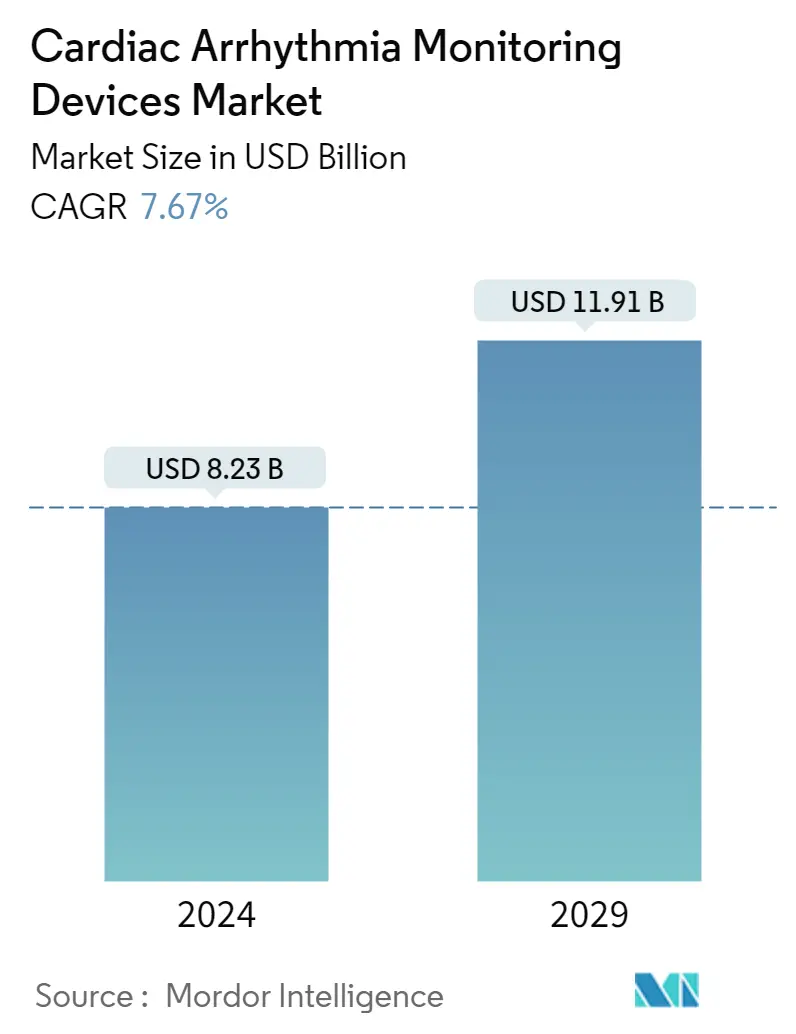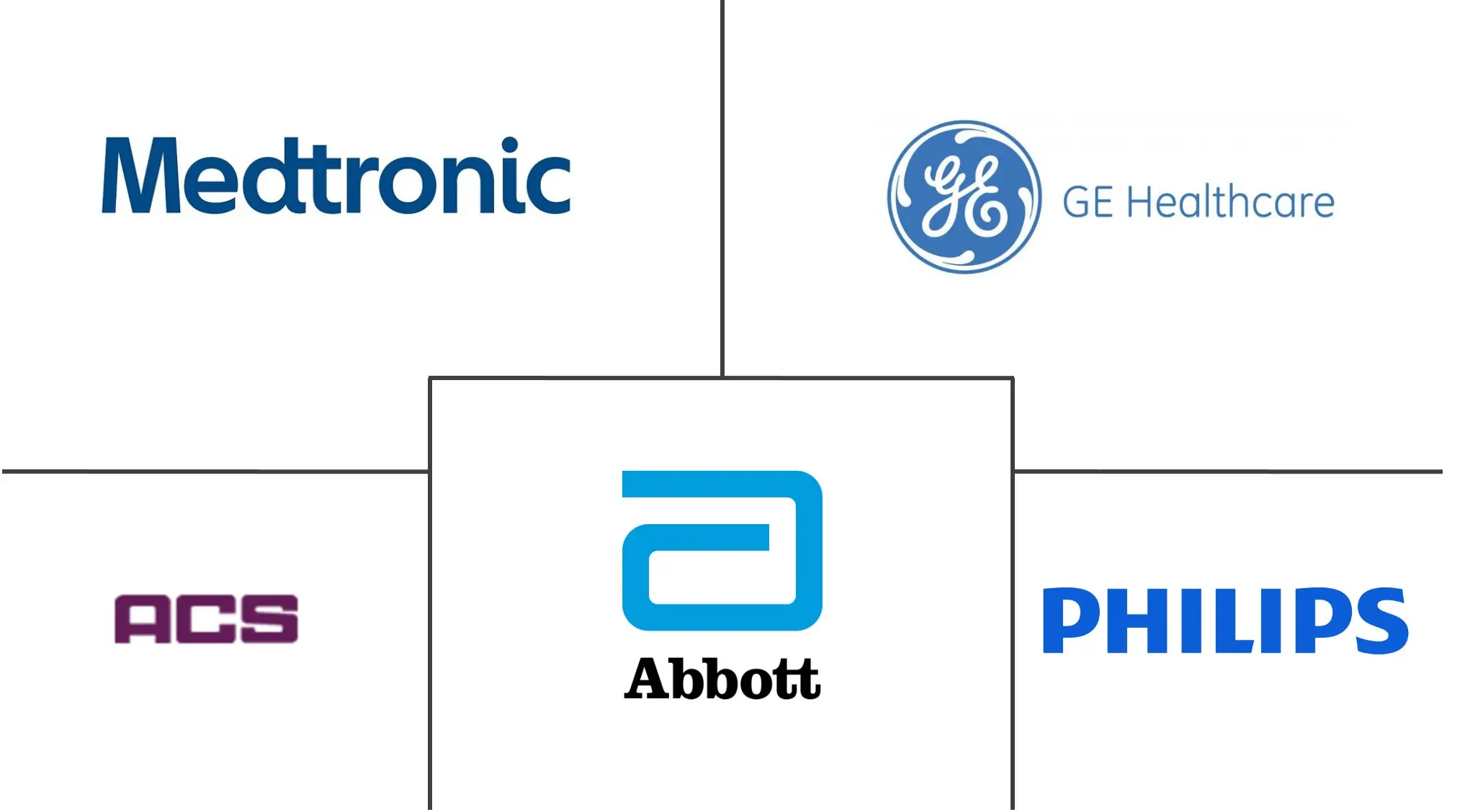Market Size of Cardiac Arrhythmia Monitoring Devices Industry

| Study Period | 2019 - 2029 |
| Market Size (2024) | USD 8.23 Billion |
| Market Size (2029) | USD 11.91 Billion |
| CAGR (2024 - 2029) | 7.67 % |
| Fastest Growing Market | Asia Pacific |
| Largest Market | North America |
Major Players
*Disclaimer: Major Players sorted in no particular order |
Need a report that reflects how COVID-19 has impacted this market and its growth?
Cardiac Arrhythmia Monitoring Devices Market Analysis
The Cardiac Arrhythmia Monitoring Devices Market size is estimated at USD 8.23 billion in 2024, and is expected to reach USD 11.91 billion by 2029, growing at a CAGR of 7.67% during the forecast period (2024-2029).
The COVID-19 pandemic has significantly impacted the cardiac arrhythmia monitoring market as several inpatient and outpatient cardiac procedures were postponed or delayed. As a result, the diagnosis of patients suffering from arrhythmias was substantially reduced. However, due to the emerging cardiac complications associated with COVID-19, the demand for arrhythmia monitoring devices is set to increase in the future. For instance, as per a July 2020 published article titled "COVID-19 and cardiovascular disease: from basic mechanisms to clinical perspectives", COVID-19 patients with underlying cardiovascular comorbidities have high mortality. The same source also reported that arrhythmias and sudden cardiac arrest are common manifestations of COVID-19. As per a December 2020 published article titled "Incidence rate and clinical impacts of arrhythmia following COVID-19: a systematic review and meta-analysis of 17,435 patients", arrhythmia is a potential cardiovascular complication of COVID-19. As per the study, in one case series of patients hospitalized with COVID-19, 16.7% developed unspecified arrhythmia. Thus, the demand for cardiac arrhythmia monitoring devices is anticipated to increase over the coming years.
Further, the market's growth can be largely attributed to the increasing use of telecardiology, ease of use and portability of cardiac arrhythmia monitoring devices, and the development of smart cardiac monitors.
Increasing usage of telecardiology is a major factor driving the market's growth. Telecardiology, in general, provides a monitoring device that can be fixed on the chest area of patients suffering from cardiac arrhythmia. Telecardiology is a cost-effective intervention for the elderly population affected by heart failure. Thus, the adoption of telecardiology is increasing. Several companies are launching their telecardiology services, propelling the market's growth. For instance, in December 2020, Coala Life launched a direct-to-patient telecardiology service. The product is a patch-free, smartphone-powered electrocardiogram (ECG) monitor that provides diagnostic quality and real-time detection of the most common cardiac arrhythmias.
The ease of use and portability of cardiac arrhythmia monitoring devices is one of the major factors driving the market's growth. For instance, in February 2021, RhythMedix launched its next-generation wearable novel cardiac telemetry monitor with built-in 4G cellular connectivity for arrhythmia detection. Thus, such developments may fuel the development of more types of similar cardiac monitors that are easy to carry and portable, thereby fueling the market's growth.
Nonetheless, poor adoption of telemetry technology in emerging markets and the high cost of remote cardiac arrhythmia monitoring devices are hindering the market's growth.
